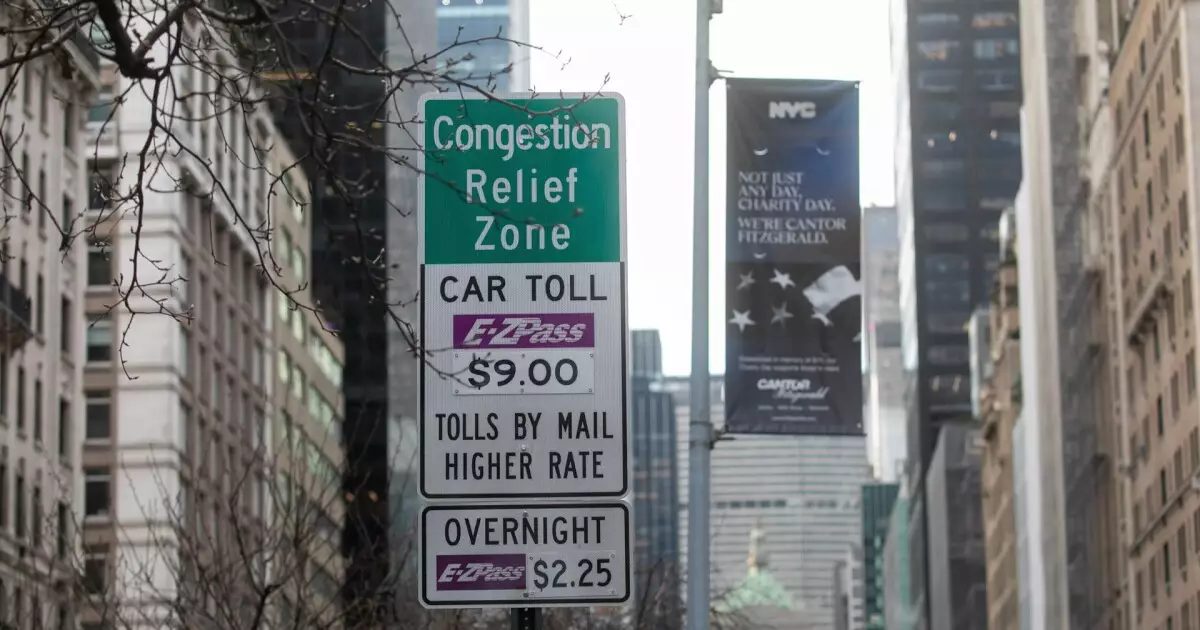In a dramatic turn of events, the Trump administration has terminated federal approval for New York City’s much-anticipated congestion pricing program, which had only recently gone into effect. This termination not only signifies a setback for urban transportation initiatives but also sets a concerning precedent for how federal regulatory frameworks interact with state and local governance. The Metropolitan Transportation Authority (MTA), poised to fight back, has already moved to seek judicial relief, arguing that the program has the potential to significantly alleviate urban congestion.
The crux of the opposition, articulated by Transportation Secretary Sean Duffy, rests on the assertion that the congestion pricing plan unfairly burdens working-class visitors and small business owners. Duffy argues that these drivers have already contributed significantly to the infrastructure through gas taxes and other levies, suggesting that the toll for accessing Manhattan’s busy thoroughfares should not serve to generate revenue for the transit system at their expense. This framing raises questions about equity and fairness in urban transportation — is it justifiable to impose additional charges on drivers when they’ve already played a part in funding the very infrastructures they rely on?
In response to these concerns, MTA Chair and CEO Janno Lieber described the congestion pricing program as a “highly successful” initiative tasked with reducing traffic and enhancing travel efficiency. The MTA’s defense points to a broader tension in urban policy: the question of how to balance the needs of individual drivers with the pressing demands of a city that continually grapples with congestion.
Originally proposed by former Mayor Michael Bloomberg in 2007, the program has been in a perennial state of flux, hampered by lawsuits and political disagreements. After a period of uncertainty, Governor Kathy Hochul initiated the planned tolls last January, imposing a $9 charge for most vehicles entering Manhattan south of 60th Street. Despite having lower toll rates than the originally proposed ones, the revised program aimed to generate $15 billion in revenue aimed at supporting MTA’s capital projects.
However, the initiation of this program came with its challenges. Hochul’s earlier suspension of the initiative last June, due to cost concerns, illustrated the complexities that come with instituting such ambitious urban transportation policies. The latest termination by the current administration thus stands as a poignant reminder of the fragility of such reforms, particularly in a politically charged atmosphere.
Duffy’s decision to pull federal support specifically cited a lack of a toll-free alternative for drivers. He argued that the program should have been primarily focused on reducing congestion rather than raising funds for the city’s transit system. This perspective aligns with the stated purpose of the federal Value Pricing Pilot Program (VPPP), which intends to examine tolling structures aimed squarely at mitigating congestion.
However, the administration’s interference also raises critical questions about federal overreach. This intervention inhibits local authorities’ autonomy to innovate and adapt solutions tailored to their unique challenges. For many advocates and urban planners, the termination reveals a troubling trend: the shrinking space for progressive policy experimentation in urban environments.
With the future of the congestion pricing program hanging in the balance, the ramifications extend far beyond just New York City. If this pioneering initiative is ultimately dismantled, it could discourage other cities from pursuing similar initiatives aimed at addressing the endemic issues of urban traffic congestion and pollution.
For now, the MTA’s legal battle represents more than just a contest over tolling policies; it embodies a broader struggle for the soul of urban America, where equity, environmental sustainability, and fiscal responsibility must find a delicate balance. As the case unfolds, all eyes will be on New York City to see if this bold step toward a more sustainable urban future can withstand the pressures of political opposition and federal scrutiny. The outcome could serve as a powerful case study for urban areas grappling with similar issues nationwide.

